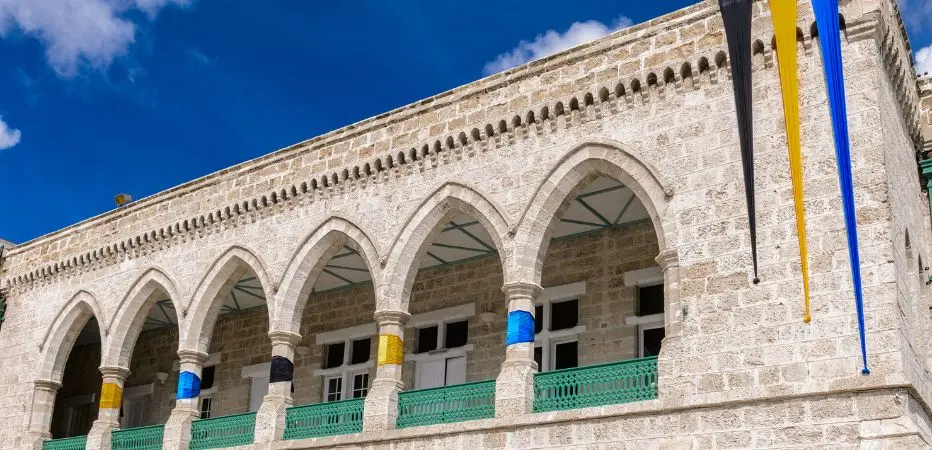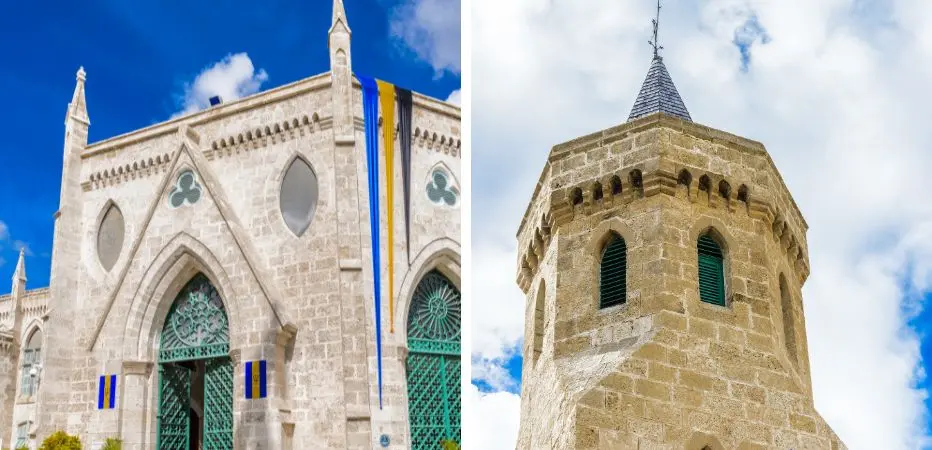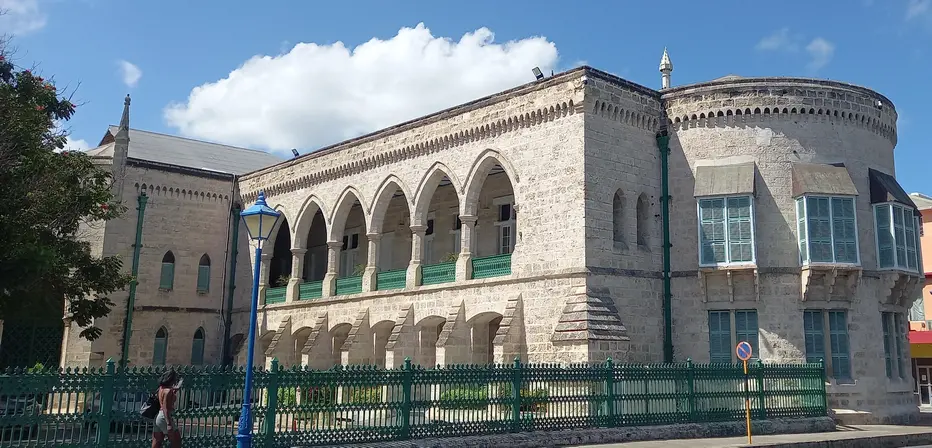Parliament Buildings: A Testament to Barbados' Democratic Heritage
Standing proudly in the heart of our capital city Bridgetown, Parliament Buildings are significant symbols of democratic governance and architectural heritage. They offer a fascinating glimpse into the island's colonial past and our evolution into a modern independent republic.

A Monument to Democracy
Barbados has a continuous parliamentary tradition dating back to 1639, placing the island alongside England and Bermuda as one of the earliest adopters of Westminster-style democratic governance in the British colonial system.
The current buildings, constructed in the 1870s following a devastating fire, continue to serve as an active center of governance through the House of Assembly and the Senate, where matters of national importance are debated and legislation passed.

Architectural Grandeur: Victorian Gothic Meets Caribbean Climate
Parliament Buildings showcase a masterful blend of Victorian architecture adapted for the tropical Caribbean environment. There are two main structures: the East Wing, housing the House of Assembly and the Senate, and the West Wing which is home to the National Heroes Gallery and Museum of Parliament.
These imposing coral stone buildings demonstrate the skilled craftsmanship of 19th-century Barbadian artisans working with local materials.
Distinctive Gothic arches create dramatic plays of light and shadow throughout the day. The building's coral stone facade has weathered beautifully over the years with the thick coral stone walls providing natural insulation against the Caribbean heat.

The Clock Tower: Bridgetown's Timekeeper
The distinctive clock tower, flying the Barbados flag, is an architectural focal point. Once a practical civic amenity marking the hours for local residents and merchants, it remains a treasured landmark of the city.
Interior Treasures: Where History Lives
Inside these walls, years of democratic debate have shaped Barbados' destiny. In the House of Assembly, members of parliament represent the views, aspirations and concerns of their constituents. The country has a bicameral legislature, with legislation passed in the House of Assembly before moving to The Senate for further debate.
Both chambers feature public galleries where persons can observe parliamentary proceedings, embodying the democratic principle of transparent governance.
The Complex Legacy of Democracy: From Exclusion to Inclusion
Democracy in Barbados has been an evolving and often imperfect institution. For much of its history, this parliament was far from representative of all Barbadians.
During the colonial period, parliamentary representation was dominated by white plantation owners whose primary concern was protecting their economic interests, particularly in sugar production and the exploitation of enslaved labor. The majority Black Barbadian population was systematically excluded from political participation even after emancipation from slavery in 1838.

Non-landowners, who comprised the vast majority of the population, and women had no voice in the very chambers where decisions affecting their lives and livelihoods were made.
It was not until the mid 1900's that full adult suffrage was finally achieved, granting all adult Barbadians the right to vote. The general election in December 1951 was the first under adult suffrage. This milestone marked a fundamental transformation of what democracy meant in Barbados, finally extending political participation to all.
Today's parliament, while housed in the same coral stone buildings, represents a fundamentally different institution than the exclusive colonial assembly of earlier times.
Symbols of National Identity
Throughout the buildings are symbols that tell the complex story of Barbados' journey from colonial governance to fully inclusive democratic representation. The buildings house portraits of governors, prime ministers, and other significant figures in Barbadian history, creating a visual narrative of political evolution that reflects both progress and the long struggle for true representation.
The parliamentary mace, a symbol of the House's authority, also conveys the continuity of democratic governance through colonial rule, independence in 1966, and the transition to a republic in 2021.

Democracy in Stone and Time
The Parliament Buildings of Bridgetown stand as more than architectural monuments; they represent the living embodiment of democratic ideals shaped by Caribbean experience. For visitors seeking to understand Barbados beyond its beaches and rum, these buildings offer insight into the institutions and values that have shaped our remarkable island nation.
They provide a meaningful connection to Barbados' past, present, and future. In these coral stone chambers, the voice of the Barbadian people continues to be heard.
Bridgetown Tours
Join a tour of Bridgetown to discover the intriguing history of our island and capital city...
Independence Icons: The Monuments that Mark Barbados' Journey
Monument to the Barbadian Family







